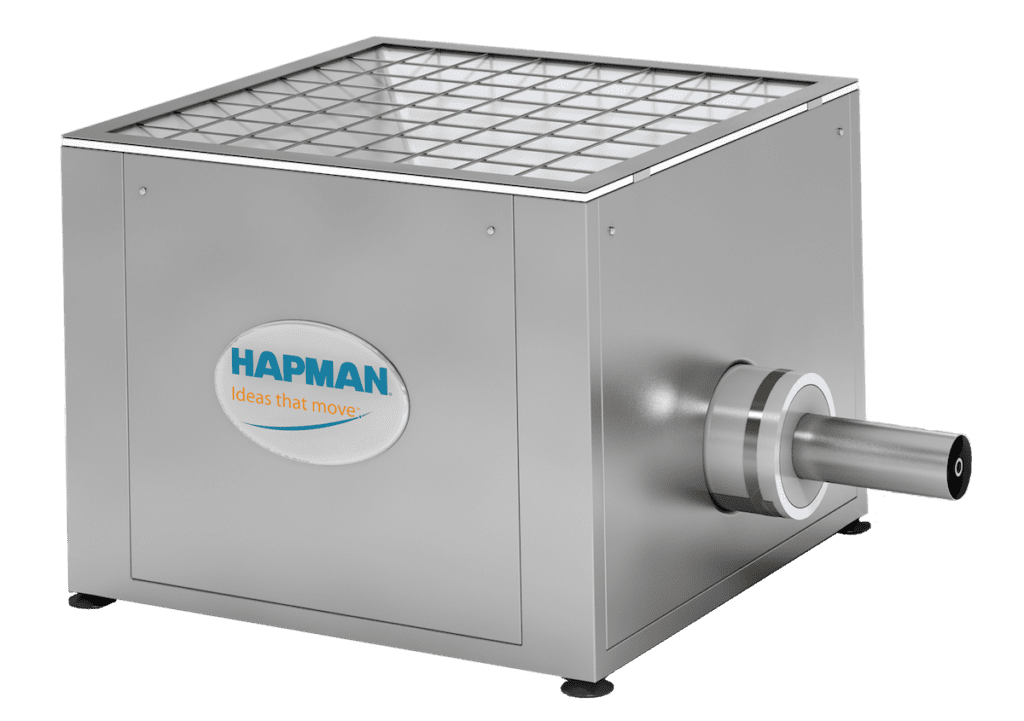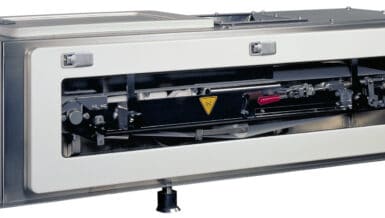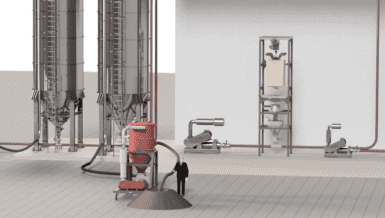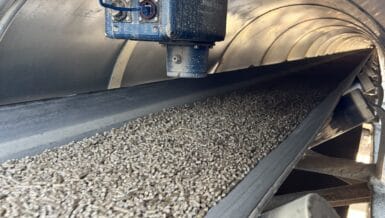Volumetric Feeding
The principle of feeding volumetrically starts with keeping the auger full. We know the volume that is displaced by the auger in the nozzle, the pitch of the auger, and the rotational speed. So, an auger with a one-inch pitch that is turning at 100 revolutions per minute will move the volume of material forward 100 inches per minute. Varying the rotational speed of the auger provides linear control of the volume of material being dosed.
This method provides consistent, and repeatable feeding and dosing when handling consistent powders. They require manual calibration, but their simplicity provides a reliable solution without the expense of a PLC and a scale.
Volumetric feeding falls short when a materials bulk density fluctuates, or you need to monitor or track material usage.
Gravimetric Feeding
Gravimetric feeders (loss in Weight or gain in weight) provide a means for dosing or metering continuously by weight. The controls can steadily deliver materials of varying bulk densities, track usage, and detect supply interruptions. The delivery accuracy they provide gives you complete control of your product quality.
A typical LIW system costs more than volumetric controls because it adds load cells, control module, and an HMI. However, overall control, record keeping, and accuracy gained with the Gravimetric feeder are advantageous for many applications and often the ROI offsets these costs.
Choosing the right gravimetric feeder or volumetric feeder for your application is important to the cost and quality of the output of your facility. The basics are outlined here but speaking with a bulk material handling expert to design the optimum system for your application is important to achieving quantifiable savings in the long-run. The best thing to do when deciding between volumetric and gravimetric feeders is the supply clear expectations and concise application data when consulting an expert.
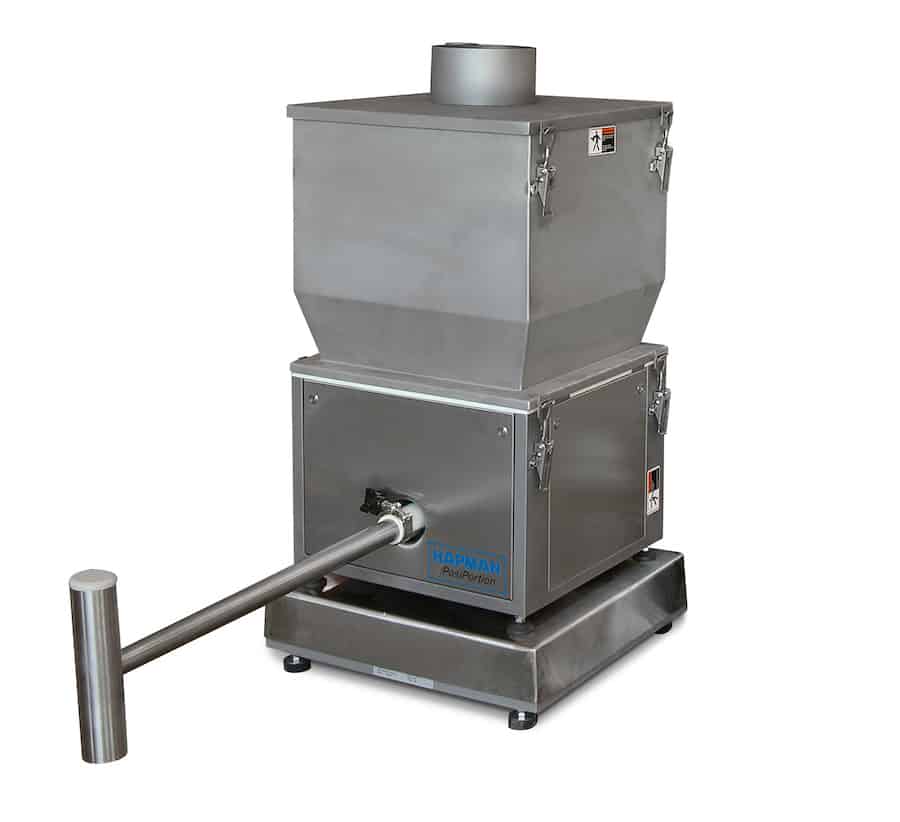
If you need a feeder for your applications, don’t hesitate to contact the experts at Hapman for more information. Hapman’s line of Volumetric and Gravimetric Industrial Feeders provide you with the accuracy and efficiency that you need in your dosing application. Whether it be the Flexible Wall feeder or the U-trough Screw Feeder, Hapman’s wide variety of industrial feeders will provide you precisely what you need, when you need it.




